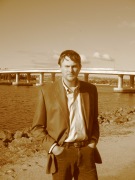American literary history, even before C.S. Peirce named “pragmatism” as a philosophy, validates much of what pragmatism has to offer. Joan Richardson speaks of “frontier instances” whereby certain writers become aesthetic outposts from which we can trace continuities of thought and artistic representation. She treats literature as a life form that must adapt to its environment; similarly, Richard Poirier looks to a tradition of linguistic skepticism in American literature to show the role that artistic influence and troping have had on American culture. Long before Richardson and Poirier, George Santayana exercised his own literary flair in his celebratory, summative essays about American culture and experience. If American literary history can undergo operations of tracing and mapping, it might be because—as Richardson, Poirier, and Santayana have suggested—the unfolding and development of an American literary canon have been processes of evolution. Literary texts and movements have shown a tendency toward growth that is responsive to the natural and changing circumstances of the time.
Richardson begins A Natural History of Pragmatism with 17th century Puritan ministers and then quickly moves to Jonathan Edwards. Edwards is representative of the Calvinist notion of limited disclosure, the idea, in other words, that God reveals his divinity to us through the shapes, forms, and outlines he provides to us in the phenomenal world. From this idea (and others like it) began the uniquely American insistence on the value of nature and the physical universe to thought and the spiritual or psychological realm. As Americans sought to make themselves culturally and intellectually independent from Europe, both in the eighteenth and nineteenth centuries, they used the New World landscapes and vastly unexplored (by Europeans at least) terrains as objects of their fascination and as sources of inspiration. Even figures like Jefferson insisted upon the scientific study of the natural world in order to authorize theories about law and politics, which he wished to distinguish from European ways. Jefferson, like William Bartram, another naturalist, lionized Natives as being more in tune with nature and hence more “lawful” in the sense that their communal governments were in keeping with the laws of nature. However problematic we may consider these romanticized depictions today, we should at least say of them that they inspired further attention to sustained observation of nature as a critical component of what was intended to be a new way of thinking divorced from the Old World of Europe.
Santayana says that when orthodoxy recedes, speculation flourishes, and accordingly it is no surprise that as Puritanism solidified into an orthodoxy of the kind against which it once defined itself, there was a resistance among artists and writers and thinkers. Emerson, for one, adapted the thinking of the Calvinists while maintaining their commitment to the natural world as a means for realizing higher truths. Instead of God revealing himself to man through the forms of the natural world, God, according to Emerson, was realized within the person with a poetical sense, who was inspired by the natural world to discover the divinity within himself. To become one and to see all—that is, to become a “transparent eyeball”—was something of a religious experience for Emerson. Read the rest of this entry »
